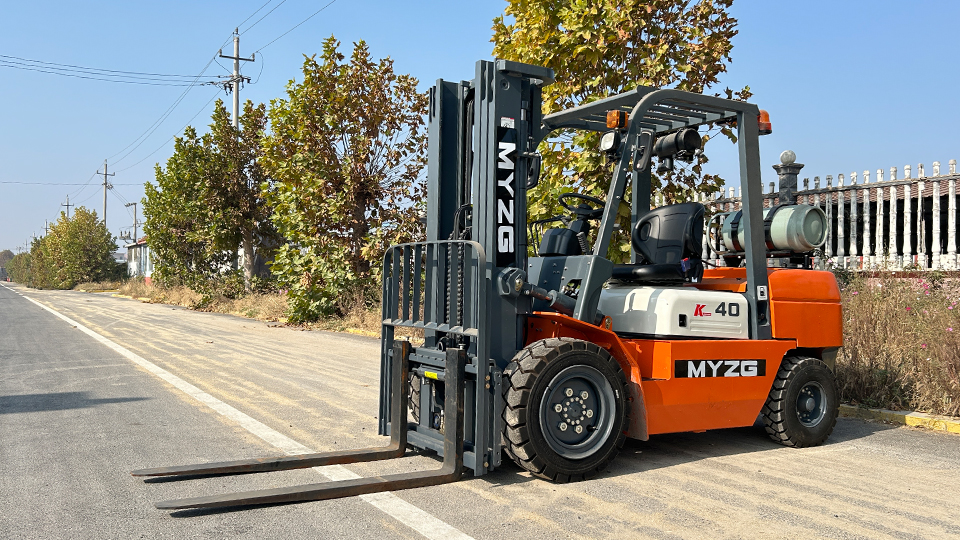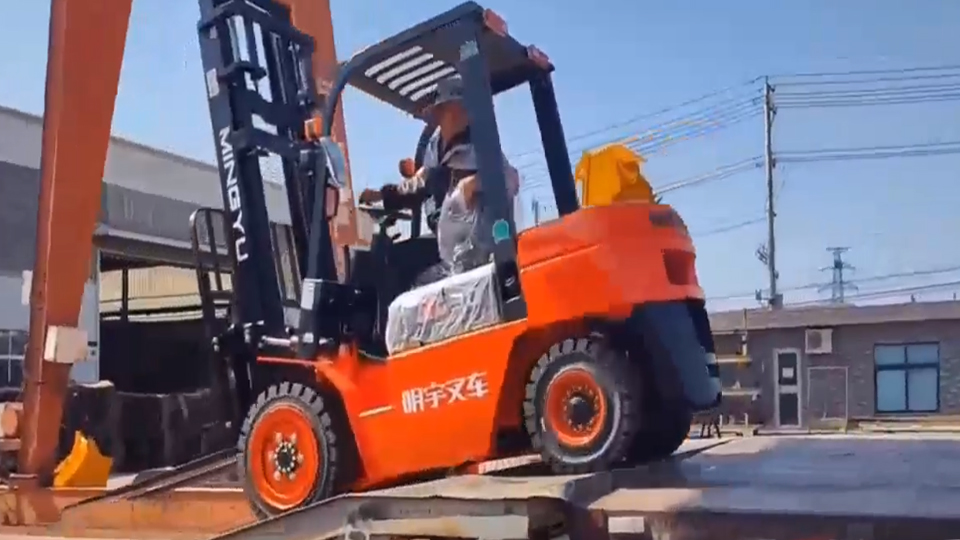
I. The Legal Mandate: Certification vs. LicenseThe terminology surrounding forklift operation is one of the most misunderstood areas of occupational safety. Technical compliance hinges on recognizing and adhering to the federal standard.The Misconception of the "Forklift License"The term "forklift license" is a colloquialism—an informal term often used in job postings or by workers, but it has no legal standing with federal safety regulators. No government agency in the U.S. issues a "Forklift Driver's License."The crucial points regarding a standard driver's license are:Not Required by OSHA: Federal OSHA regulations do not require an operator of a powered industrial truck (PIT) to hold a standard state motor vehicle driver's license to operate the equipment in a workplace.Employer Discretion: While not federally required, an employer may establish a company policy demanding operators possess a valid driver's license for employment, especially if the forklift must occasionally traverse public roads or if the employer wants to ensure a baseline level of motor vehicle operating experience.The Binding Requirement: Forklift CertificationThe legal requirement enforced by OSHA is for Operator Certification. This is the employer's responsibility and legal record that confirms the employee is competent to safely operate the specific equipment in the specific work environment.FeatureForklift License (Informal)Forklift Certification (Mandatory)Issuing AuthorityNone (Often confused with state DMV)The Employer (following a training program)Legal BasisNone (Informal language)OSHA Standard 29 CFR 1910.178FocusBasic driving skills, traffic lawsWorkplace Safety, Load Handling, Vehicle StabilityTransferabilityOften mistakenly assumed to be portableNon-Transferable between employers and equipment typesII.

The Three Core Components of OSHA CertificationOSHA mandates a comprehensive training program that must be delivered before an employee is permitted to operate a powered industrial truck independently. This program is detailed in $\text{29 CFR } 1910.178(\text{l})(\text{2})(\text{ii})$ and consists of a combination of three essential parts:1. Formal Instruction (Theory)This component provides the theoretical knowledge necessary for safe operation. It can be delivered through various methods, including classroom lectures, interactive computer learning modules, videos, and written materials.Key Topics Covered:Truck-Related: Operating instructions, warnings, controls, engine/motor operation, steering and maneuvering, vehicle capacity, load stability, pre-operation inspection, and battery/refueling procedures.Workplace-Related: Surface conditions, load composition, stacking/unstacking procedures, pedestrian traffic in the area, narrow aisles, ramps, and any unique or hazardous conditions specific to the job site.Regulatory: The requirements of the OSHA standard itself.
2. Practical Training (Demonstration and Exercise)The formal instruction must be followed by practical, hands-on training. This involves a qualified trainer demonstrating the proper operating procedures, followed by practical exercises performed by the trainee.During this stage, the trainee is authorized to operate the forklift only under the direct supervision of the qualified trainer and in a manner that does not endanger the trainee or other employees. This step is crucial for transitioning theoretical knowledge into tangible, safe operating skills.3. Operator Evaluation (Performance Test)The final step is the formal evaluation of the operator's performance in the workplace. The employer must evaluate the operator's proficiency to ensure they are competent to operate the specific powered industrial truck safely.Must Be Hands-On: A written test alone is insufficient for certification. The evaluation must be a practical assessment where the operator demonstrates safe handling of the equipment, proper load manipulation, and adherence to safety protocols under real-world conditions.Qualified Person: The training and evaluation must be conducted by a qualified person who, by knowledge, training, and experience, can effectively train operators and evaluate their competence.Only upon the successful completion of the formal instruction, practical training, and performance evaluation is the employee considered certified and officially authorized to operate the forklift.III. The Non-Transferability of Forklift CertificationA fundamental technical characteristic of OSHA certification is its site-specific and equipment-specific nature. This makes it distinctly different from a standard driver's license, which is generally valid across state lines and for any car.Equipment-Specific TrainingAn operator must be trained and certified on the type of powered industrial truck they will be operating. OSHA recognizes seven different classes of industrial trucks, each with unique operating characteristics, stability issues, and hazards (e.g., Class I Electric Motor Rider Trucks, Class IV Internal Combustion Engine Fork Trucks, Class II Narrow Aisle Trucks).Certification to operate a standard sit-down counterbalance forklift (Class IV) does not automatically qualify an operator to use an order picker (Class II) or a rough terrain forklift (Class VII). If an employee switches to a different class of equipment, new training and evaluation are required.Workplace-Specific EvaluationThe operator's evaluation must take place at the actual worksite where they will be employed. This is necessary because safety depends heavily on site conditions, such as:Floor conditions (smooth vs. uneven).Traffic flow and patterns.Aisle widths and overhead clearance.Loading dock procedures.Storage systems (racking height, stacking methods).An employer is responsible for certifying the employee on their equipment, under their conditions. Training received from a previous employer only satisfies the "formal instruction" portion of the requirement; the new employer must still conduct the practical training and site-specific performance evaluation.IV. Documentation and Recertification RequirementsOSHA's rules place a heavy emphasis on documentation and periodic re-evaluation to maintain competency.The Certification RecordThe employer is legally required to establish and maintain a written certification record for each authorized operator. This record must contain:The name of the operator.The date of the training and evaluation.The identity (name/signature) of the person(s) performing the training and evaluation.These records must be retained for the entire period of the operator's employment. This record serves as the official, defensible proof of compliance during an OSHA inspection.The Three-Year Re-Evaluation CycleForklift certification is not permanent.

3. OSHA mandates that the performance of every powered industrial truck operator must be re-evaluated at least once every three years ($\text{29 CFR } 1910.178(\text{l})(\text{4})(\text{iii})$) to ensure continued safe operation.Mandatory Refresher TrainingRefresher training and re-evaluation may be required sooner than the three-year mark in several critical scenarios:Unsafe Operation: The operator is observed operating the vehicle in an unsafe manner.Accident/Near-Miss: The operator is involved in an accident or a near-miss incident.Evaluation Deficiency: An evaluation reveals that the operator is not operating the truck safely.Workplace Change: Changes in the working conditions in the area where the truck operates could affect safe operation.New Equipment: The operator is assigned to operate a different type of truck.These mandatory refreshers ensure that bad habits are corrected immediately and that operators are trained on new hazards or equipment.V. Risks of Non-ComplianceIgnoring the mandatory certification requirement by allowing an employee to operate a forklift with only a standard driver's license (or no documentation at all) exposes the employer to severe legal and financial risks.Significant OSHA PenaltiesFailure to comply with the Powered Industrial Truck training standard is one of the most frequently cited and costly violations issued by OSHA.Serious Violations: Can result in fines of up to $16,131 per violation.Willful or Repeated Violations: Can result in fines of up to $161,323 per violation.These penalties are assessed against the employer, underscoring the employer's ultimate legal responsibility for the training program.Increased Liability and Accident RiskUncertified operators lack the specific knowledge of load stability, center of gravity principles, mast control, and site-specific hazards.Statistics: OSHA estimates that 70% of all forklift accidents could be prevented with proper training. Accidents—such as tip-overs, dropped loads, and pedestrian strikes—result in fatalities, serious injuries, workers' compensation claims, and significant property damage.Legal Action: In the event of a severe injury or death, the absence of a required certification record leaves the employer virtually defenseless against legal action, potentially leading to massive liability judgments.ConclusionThe technical truth is that there is no special license for a forklift, but there is a non-negotiable federal requirement for Forklift Operator Certification under $\text{OSHA 29 CFR } 1910.178$. This certification is a dynamic, three-part training process—formal instruction, practical experience, and a hands-on performance evaluation—that must be performed by the employer and documented every three years. Relying on an employee's standard driver's license or an expired certificate is a direct violation of federal safety law. For any operation utilizing powered industrial trucks, rigorous adherence to the certification process is the single most effective way to ensure employee safety and maintain legal compliance.
Name: selena
Mobile:+86-13176910558
Tel:+86-0535-2090977
Whatsapp:8613181602336
Email:vip@mingyuforklift.com
Add:Xiaqiu Town, Laizhou, Yantai City, Shandong Province, China